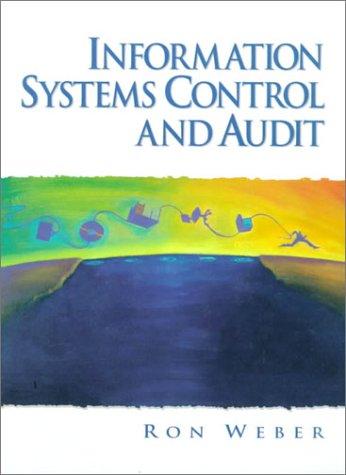In Australia, many financial institutions participate in a clearinghouse system for direct credit and direct debit transactions.
Question:
In Australia, many financial institutions participate in a clearinghouse system for direct credit and direct debit transactions. For example, the employees of an organization can request that their pay be credited directly to their account in a financial institution. A typical situation is that the employer will prepare a magnetic tape or diskette with the payroll credits and then deliver this tape or diskette to the computer operations facility of some financial institution. The financial institution will read the tape or diskette and transmit the direct credits to a clearinghouse computer. At the clearinghouse computer, the transactions are split according to financial institution. The transactions are then transmitted to the respective financial institutions for posting to the employees' accounts.
Direct debit transactions are processed in a similar way. For example, a utility supplier might prepare a tape of debit transactions to be charged directly to the accounts of its customers. It will deliver the tape to the computer operations facility of some financial institution. The tape will then be read and the contents transmitted to a clearinghouse computer. The clearinghouse computer will split the transactions by financial institution and then transmit batches of debit charges to the respective financial institutions for posting to the accounts of the utility's customers.
The financial institutions that receive direct credit or direct debit transactions from employer or supplier organizations play a straightforward but critical role in the clearinghouse system. In particular, it is usually the production control groups in their computer operations facilities that are responsible for achieving the following objectives:
1. Only authorized direct credit and direct debit transactions must be submitted to the clearinghouse computer (authenticity objective).
2. Direct credit transactions received from employers and direct debit transactions received from suppliers must not be altered (accuracy objective).
3. All direct credit transactions received from employers and all direct debit transactions received from suppliers must be transmitted to the clearinghouse computer (completeness objective).
4. All direct credit transactions received from employers and all direct debit transactions received from suppliers must be transmitted to the clearinghouse computer on a timely basis (timeliness objective).
Required. For each of these four objectives, briefly describe the following:
1. An error or irregularity that would result in the objective not being achieved;
2. An exposure that would arise from the error or irregularity you identify;
3. A control exercised by production control personnel in the operations area that would reduce expected losses from the error or irregularity you identify;
4. An audit procedure you would use to determine whether the control is operating reliably.
Step by Step Answer:






